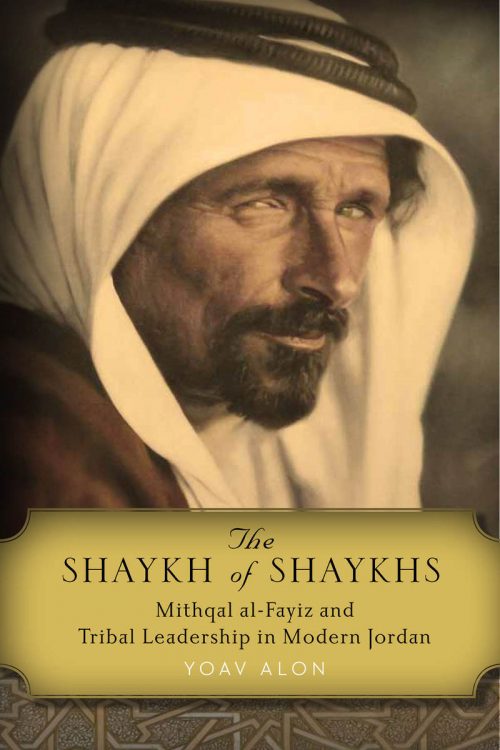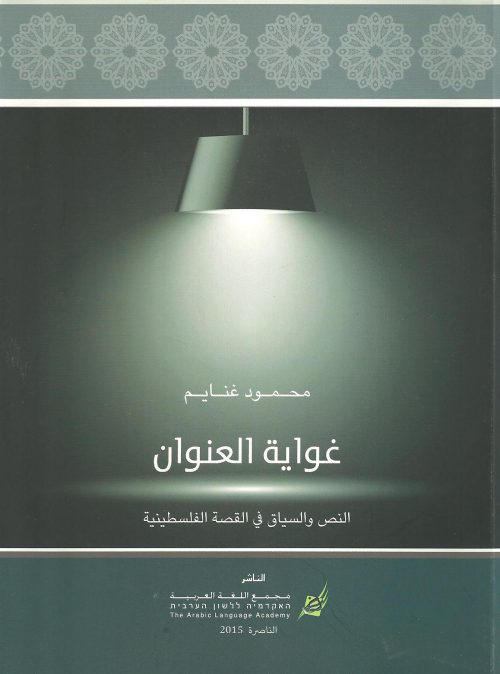-
 Add to cartQuick view
Add to cartQuick viewVol. 7, No. 1 Summer 2017
Free!Add to cartQuick view -
 Add to cartQuick view
Add to cartQuick viewGender, Religion, and Secularism in the English Mission Hospital of Jerusalem, 1844–1880
Free!This article offers new insights into the operation of the Mission Hospital built in Jerusalem in 1844 by the London Society for Promoting Christianity amongst the Jews (LJS) and the space that was created within it. I argue that the encounter in Jerusalem between Jewish women and the missionaries worked to create a liminal space that was neither religious nor secular, neither Jewish nor Christian, but all (and none) of these at once. I draw on Olwen Hufton’s concept of the “economy of makeshifts” to portray the hospital’s unique space. Based on the existing literature and new evidence, I show that in effect the Mission Hospital served women more than men, and I suggest that the gender composition of the patients allowed the hospital to succeed and helped to shape its operation. After a brief review of the literature, I introduce the LJS and compare its Jerusalem medical mission with contemporary medical institutions in England. I then expand on evidence showing that the Mission Hospital was in fact more of a women’s hospital and suggest why that was the case.
Add to cartQuick view -
Add to cartQuick view
Yoav Alon. The Shaykh of Shaykhs: Mithqal al-Fayiz and Tribal Leadership in Modern Jordan. Stanford, CA: Stanford University Press, 2016. 224 pp.
Yoav Alon. The Shaykh of Shaykhs: Mithqal al-Fayiz and Tribal Leadership in Modern Jordan. Stanford, CA: Stanford University Press, 2016. 224 pp.
$5.00Free!Add to cartQuick view -
 Add to cartQuick view
Add to cartQuick viewHasan and Marika: Screen Shots from a Vanishing Egypt
Free!This essay analyzes an Egyptian comedy film from the late 1950s as a window—one of the last cinematically—into the vanishing world of Egypt’s minority populations in the aftermath of the Suez Crisis and in the midst of nationalization and Egyptianization. Hasan and Marika (1959) focuses on one particular community, Egyptian Greeks. It borrows heavily from ethnic/religious minority tropes from the long-standing canon of Egyptian film and theater, in particular several classic works that deal with Muslim-Christian-Jewish pairings. It speaks to broader issues of what some scholars have noted to be a shifting or narrowing Levantine ethos. Concurrently, it raises questions about social and cultural transformations in the immediate postcolonial moment. This essay reads the film within the contexts of Egyptian social and cultural history, the position of the Greek community, ongoing limitations to true social integration, and historical questions about the Greek community’s demise. It also reads the film as a deliberate, if at times whimsical, commentary upon Egypt’s changing social landscape, comparing it to other works and later nostalgic depictions of Egypt’s lost multiculturalism.
Add to cartQuick view -
Add to cartQuick view
Mahmud Ghanayim. غواية العنوان: النص والسياق في القصة الفلسطينية[The Lure of the Title: Text and Context in Palestinian Fiction, 1948–2012]. Nazareth: The Arabic Language Academy, 2015. 240 pp.
Mahmud Ghanayim. غواية العنوان: النص والسياق في القصة الفلسطينية[The Lure of the Title: Text and Context in Palestinian Fiction, 1948–2012]. Nazareth: The Arabic Language Academy, 2015. 240 pp.
$5.00Free!Add to cartQuick view -
 Add to cartQuick view
Add to cartQuick viewBetween Politics and Politics of Identity: The Case of the Arab Jews
Free!The article introduces the term “political Arab Jew,” its nature and meaning. It will show that proponents of the Arab Jew seek to separate the ethnic from the national, the Jew from the Zionist, and realign ethnic identities: Arabs, who include Jews and Muslims, vs. Ashkenazim/Zionists. They do so by creating an “imagined community,” by rejecting an ascriptive identity based on an ethnic/national juxtaposition, and by suggesting their own kind of identity, a self-ascriptive identity that separates the ethnos from the nation. They have failed in their mission, as the majority of Jews of Middle Eastern and North African origin reject the Arab Jew definer as representing their own identity. Even the more militant Mizrahim, who are fighting to change Mizrahi-Ashkenazi relations, limit their activities to the cultural field; when their goal is to redefine the place of the Mizrahim in Israel, they do so from within, not outside of, Jewish/Zionist society.
Add to cartQuick view -
 Add to cartQuick view
Add to cartQuick viewThe Arab Jew Debates: Media, Culture, Politics, History
For the past twenty-five years, and particularly during the last decade, the idea of the Arab Jew has been debated in multiple forums in different parts of the world. The Arab Jew is represented in literature and film, discussed in blogs and social media, and featured in live performances. It has informed scholarship in literary and cultural studies, sociology, and history, in Israel, the Arab world, Europe, and North America. Yet the term “Arab Jew” remains controversial, especially in Israel, where it is widely viewed as a left-wing political concept. This article surveys the Arab Jew’s full range of expression to date, emphasizing the reciprocal movement of ideas across different geographies and between discursive spheres. It argues that the Arab Jew idea has developed as both a project of political intervention into the present-day separation of Arabness from Jewishness and a project of reconstruction focusing on the Jewish past in the MENA region. Examining recent episodes in the Israeli public sphere, the article investigates how contemporary discussions about Arab Jewish identity and culture utilize competing views of history. It concludes by reconsidering the relevance of the “Arab Jew” to the burgeoning historical scholarship on Jews in the MENA region during the nineteenth and twentieth centuries.
$5.00Free!Add to cartQuick view -
 Add to cartQuick view
Add to cartQuick viewAbandoning Language: The Project of Arab-Jewish Subjectivity in Sami Michael’s Arabic Fiction of the 1950s
Free!Sami Michael is a well-known, Iraqi-born Israeli writer whose best-selling works have been widely discussed in both public and academic discourse. However, long before writing in Hebrew, Michael published several short stories and articles in his native Arabic during the 1950s. This article examines a selection of Michael’s Arabic stories and frames them as the genesis of his representations of Arab-Jewish subjectivity, while also emphasizing the importance of the fact that a well-known Israeli writer began his literary career in Arabic. I argue that to sketch out a fuller picture of Michael’s literary voice, we must take into account the ways in which his early Arabic writings were precursors of his later Hebrew novels and how the process of abandoning his native language was formative even before his switch to Hebrew. The short stories discussed here all confront the ambivalences and, importantly, the possibilities that characterize Michael’s imagined Arab-Jewish subjectivity, suggesting it to be a literary sensibility fraught with a paradoxical sense of simultaneous potential and dissolution.
Add to cartQuick view -
 Add to cartQuick view
Add to cartQuick viewWe can’t understand ourselves without the Arabic: Dreams in Cambridge (2009)
In this paper I discuss the question of Jewish-Arab identity, its intergenerational differences, its different definitions in Hebrew and Arabic, and the differences in its usage in modern times and earlier periods. In Jewish-Arab identity, as in every identity, there is a mixture of self-identification and outer-identification. Whatever one’s reason for identifying as an Arab-Jew—whether related to the historical and cultural background or because one’s family identified this way prior to Zionism and immigration or in defiance of today’s national identities in Israel and the Arab world—it does not “have” to create as strong an objection as it does. However, the objection is understood when it is an outer-identification that flattens differences between historical periods, regions, or differences between the Jews of the Muslim world. In the late nineteenth century, Jewish-Arab identity was an identification with the Nahḍa movement, with the awakening of Arabic literature and language, and it sought to reweave Jewish-Arab identity, written culture, and memory into the Arab revival, or at least into the Arab literary imagination. Later, in the first half of the twentieth century, Jewish-Arab identity was an identification with local Arab nationalism in the different Arab lands, seen as a potential for a large-scale project, started by the intellectual elite, that would make Jews an integral and equal part of their societies. In the second half of the twentieth century, after 1948 and after immigration, mostly to Israel, Jewish-Arab identity was an identity that expressed criticism of both national projects, Jewish and Arab, their marginalization and nonacceptance of the Arab-Jews, and their exclusive and oppressive nature.
$5.00Free!Add to cartQuick view
- Home
- About JLS
- Issues
- Vol. 9 No. 1 | Summer 2019
- Vol 8 No 2 Winter 2018
- Vol. 8, No. 1: Summer 2018
- Vol. 7, No. 2: Winter 2017
- Vol. 7, 1: Summer 2017
- Vol. 6, Summer/Winter 2016
- Vol. 5, No. 2 Winter 2015
- Vol. 5, No. 1 Summer 2015
- Vol. 4, No. 2 Winter 2014
- Vol. 4, No. 1 Summer 2014
- Vol. 3, No. 2 Winter 2013
- Vol. 3, No. 1 Summer 2013
- Vol. 2, No. 2 Winter 2012
- Vol. 2, No. 1 Summer 2012
- Vol. 1, No. 2 Winter 2011
- Vol. 1, No. 1 Summer 2011
- Blog
- dock-uments
- Subscribe
- Submit
- Contact



